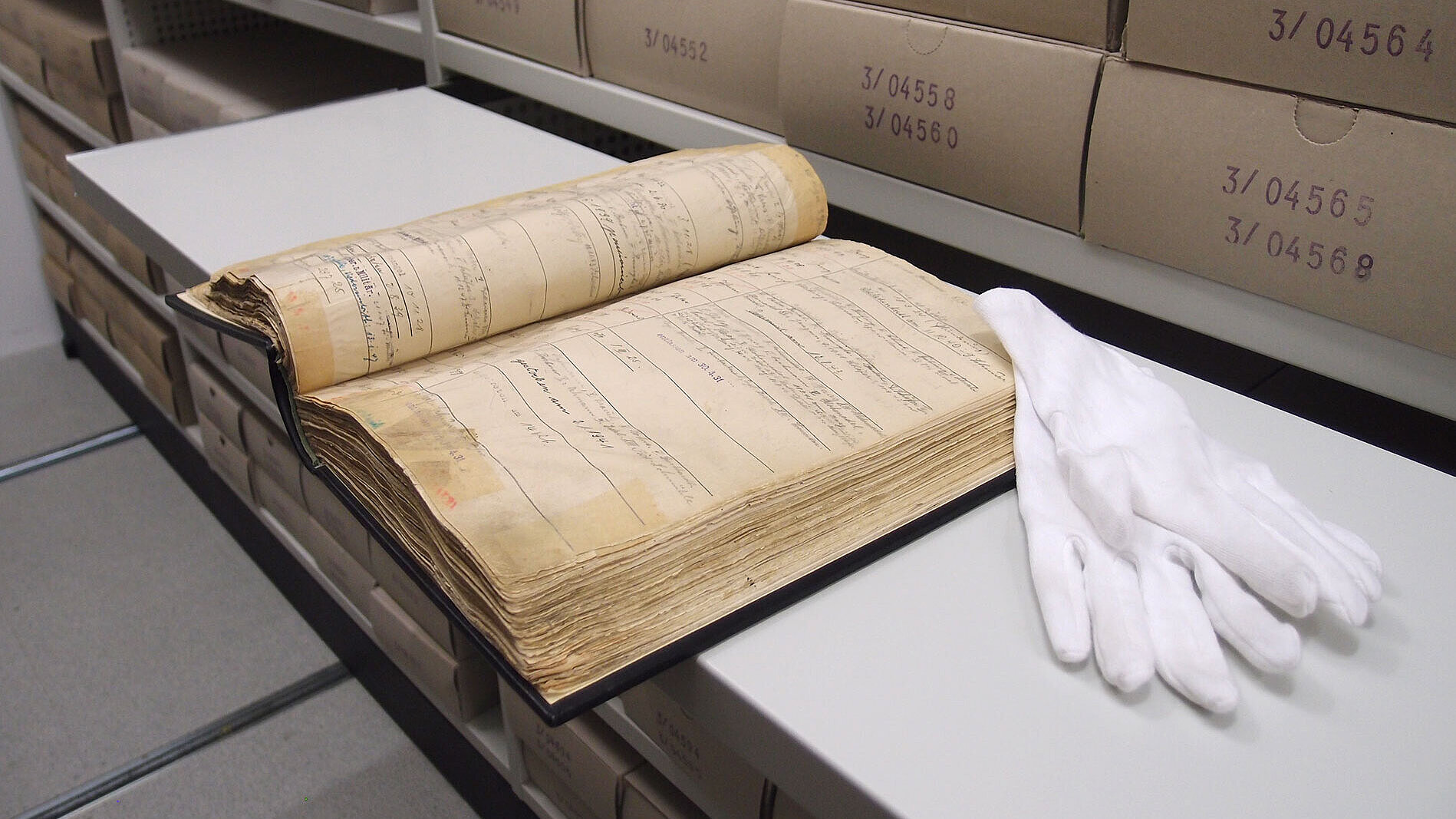Why do we need company values?
The Guiding Principles only work together as a whole, and these interconnections ultimately promote the company culture.
Many employees accept the idea that Freudenberg’s values and founding principles are important as a matter of course. But why is that true? And how did they come about?
The Freudenberg Group’s Guiding Principles today make up the core of this system of values. But long before they were written down in 1999, they were part of the company culture and actively embraced. There have been many examples of this over the course of the company’s history. But it is important to understand that the Guiding Principles only form the foundation of Freudenberg’s company culture in combination with one another. They do not stand alone – they only work together as a whole. When acting in concert, they ultimately help to form Freudenberg’s company culture.
These values can be traced back to founder Carl Johann Freudenberg. They emerged from the culture of trust that he created and modeled, and the business principles that he wrote down in 1887. What emerged was a values-based company culture underpinned by six Guiding Principles: people, leadership, a long-term orientation, innovation, a customer focus and responsibility.

The business principles that Carl Johann Freudenberg wrote down in 1887
People
“As a family-owned company, we are committed to the welfare of our employees and their personal development. We reject any form of discrimination and personal disparagement. We demonstrate and demand understanding and respect in our dealings with one another. We offer a culturally diverse work environment where employees from a wide variety of countries contribute their skills on teams to increase our expertise while enriching our company culture. We appreciate the value of our longtime relationships with customers, suppliers and other business partners.”
There are examples early in our company history that reveal a concern for the well-being of our employees early on. By 1874, Carl Johann Freudenberg had already established a company health benefit fund for employees. It still exists today. Over the decades, many supporting agencies have followed to help employees in emergencies and other everyday situations. Another element is the systematic training and nurturing of talent, which has been steadily expanded since the 1930s. As part of the global e2 initiative, this concept of support is being expanded to educational institutions outside the company. The systematic education of employees, including continuing education, leads to the next Guiding Principle: leadership.
Leadership
“True entrepreneurship has always shaped our culture. It is the foundation of our success. We nurture this tradition by consistently delegating responsibility and anticipating performance. We trust in rock-solid leadership based on personal example and shaped by modesty, trust in employees and the promotion of a team spirit. The development of managers has a high priority within the Group, to guarantee this style of leadership in the future as well.”
Carl Johann Freudenberg’s position on trust was clear: “It is better to trust a hundred times at the risk of being taken in, than to mistrust unjustly even once.” This mindset created a culture of trust in the company early on, laying the foundation for the delegation of responsibility and true entrepreneurship. That’s why special attention has always been paid to the development of managers. From the very beginning, the idea was to prepare the next generation for the management of the company with appropriate training in Germany and abroad. Those preparations for generational change highlight the next Guiding Principle: a long-term orientation.
A long-term orientation
“After more than 170 years, the Freudenberg Group is still – and will remain – in family hands. We are firmly convinced that a special strength comes from the long-term orientation that this form of ownership permits. That is why the scope and speed of our strategic development and our readiness to take risks are now – and will continue to be – shaped by commercial prudence and a solid financial underpinning. Our long and successful tradition of close global collaborations, alliances and partnerships promotes the best possible support for our customers and strengthens our position in global competition.”
To ensure long-term success, the company turned to international business from the outset. The leather market was already international at the time of the company’s founding. That is why business relationships were established in the United States, the United Kingdom, France and Turkey in 1849. Numerous other countries around the world soon followed, including Brazil (1853), Mexico (1854), Russia (1855), India (1867) and Australia (1868). During the 1920s, the first companies outside of Germany were established to continue the development of international markets. Starting in the 1930s, they were followed by international partnerships, first in Europe (Italy) and in the Americas and Asia since the 1950s. Some of them still exist today. These partnerships, in particular, have provided the impetus for product development – which leads to the next Guiding Principle: innovation.
Innovation
“As a company with German roots that is internationally oriented and experienced in global competition, we put a tradition profoundly shaped by innovation, as well as continuous transformation and progress, in the service of our customers. Continuing innovation in every field is crucial to our long-term financial success. That’s why we are in the forefront of continual improvement processes, and our company structure promotes and rewards the creativity and initiative of any individual.”
Innovations have accompanied the company over its entire history. The trend had already begun in 1850 with the production of an innovative patent leather. With the introduction of chrome tanning between 1900 and 1904, innovation led to diversification. The first seals (1929) were followed by the Simmerring (1932) and nonwovens (starting in 1936). The latter began conquering the clothing and household product markets in 1948, and in technical applications and filters in 1957. The trajectory of Freudenberg innovation continued all the way to the state-of-the-art fuel cell systems manufactured today. The focus has always been on meeting the needs of the customer with high-quality products – which takes the story to the next Guiding Principle: a customer focus.
Customer focus
“Identifying customer’s needs and expectations of our customers proactively, understanding them and satisfying them – all of this shapes what we do. As a conscientious supplier with a fully developed passion for details, we make indispensable contributions to the success of our customers. We create the greatest possible benefits for them with our global presence and commitment to quality, service and reliability.”
The company has also lived and breathed the commitment to a customer focus from the outset. It started out developing this attention to customers’ needs at international industrial exhibitions, like the Great Exhibition in London in 1851. Sales employees later went abroad, and the systematic construction of production facilities around the world began in 1950. The goal has always been to establish a presence close to customers in different regions. In the process, the company has increasingly become a problem-solver, providing its customers with made-to-order solutions for applications and solving their problems. Today the focus is increasingly on sustainable solutions – in keeping with the next Guiding Principle: responsibility
Responsibility
“Our company and its family Partners are collectively committed to the protection of the environment. In every nation-state, land and community where we operate, we want to meet our social responsibilities and be recognized as good neighbors. We take the utmost care for the safety of our employees and our products. As a family-owned company, we have high expectations for personal behavior. Fairness and integrity shape our interactions with one another and with our business partners and the public.”
The company is one of the environmental pioneers in water treatment. Even during the 19th century, industrial wastewater generated during leather production at Freudenberg was cleaned in treatment plants. In the 1970s, the company began building a systematic environmental management system now in use at every Freudenberg facility worldwide. This created the foundation for today’s sustainability strategy. Based on the strategy, it is viewing sustainability in two dimensions: For one thing, its products and processes should have the smallest possible environmental “footprint.” For another, customers should be offered products and solutions that allow them to design products that use resources more economically, reducing Freudenberg’s “handprint.” The objective: to use resources sparingly to preserve them for future generations. This goes back to the first
Guiding Principle: people.
The historic development of our values
- 1870er Carl Johann Freudenberg’s principle of trust
- 1887 Business Principles of Carl Johann Freudenberg
- 1971 First non-family member and the Board of Management: First considerations regarding the formulation of company principles. Initial question: how to make the traditional family values obligatory for executives from outside the company? The results up until the 1990s: various handbooks, guidelines and explanations. But the principles that would be applied were not adopted.
- 1994 Business Principles: On a Board of Management containing fewer and fewer family members, they were supposed to define the scope of action of future Board Members.
- 1999 Guiding Principles: They define the foundation of values for every employee in the Freudenberg Group as well as behavior toward employees, business partners, third parties, and other interest groups.
- 2011 Values and principles: Against the background of a steadily growing Freudenberg Group and increasing regional and cultural diversity in the business environment, explanations were added to the company’s Guiding Principles to make them easier to understand and provide an internationally applicable interpretation.
The long road from leather

Freudenberg has always been good at transformation. Again and again, the company has analyzed market opportunities successfully and departed from cherished and familiar paths. But there is one major exception: its emotional attachment to its original business, leather.
Freudenberg Group's corporate archive

The cliché of the somewhat quirky archivist with nickel glasses and sleeve protectors, working his way through musty mountains of files in dark cellars, still haunts some people's minds today. Reality paints a completely different picture.